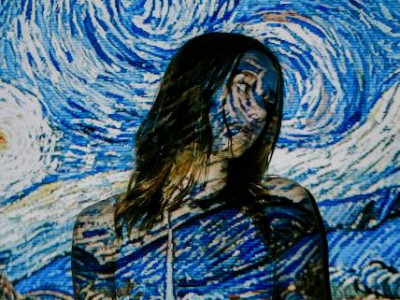(Photo courtesy of Leila de Haan.)
When the cold winds of life blow, when the world seems stuck in a bitter frost, and when all we can see is darkness, the words of painter Vincent van Gogh remind us of the quiet power of hope. “Many people seem to think it foolish, even superstitious, to believe that the world could still change for the better,” he wrote, reflecting on the cynicism that often creeps into our lives. And yet, he also gave us this simple truth: One morning the wind turns, and there is a thaw. Hope, he believed, is not naive, but essential, like the first hint of spring after a long, harsh winter.
Van Gogh, known for his emotional intensity and deep connection with nature, understood better than most the ebb and flow of life’s seasons. He lived through personal winters of loneliness, poverty, and mental health struggles, yet he continued to create art that exploded with color, life, and vibrancy. In his own way, he embodied hope—the belief that, despite all appearances, the seasons will turn, and warmth will come again.
The Temptation of Despair
Van Gogh’s words resonate deeply with our modern world, where uncertainty, conflict, and fear often feel like permanent conditions. It’s easy to give in to despair, especially when hope seems impractical or when immediate solutions seem out of reach. The temptation is to ask, as he wrote, “What do I care if there is a summer; its warmth is no help to me now.” When we’re in the depths of our personal winters—whether through grief, failure, or hardship—hope can seem distant, irrelevant even.
But Van Gogh challenges this outlook. He reminds us that the winter is not permanent. Even when the cold seems relentless, there is always the possibility of change, often arriving unexpectedly, without our permission, just as the first signs of spring come after the thaw.
Hope is a Rebellion Against the Darkness
Van Gogh’s insight into hope isn’t just about waiting for better days to come. Hope is an active choice, a quiet rebellion against the darkness. It’s a refusal to believe that winter will last forever, even when all evidence seems to point to the contrary. This idea is powerful because it acknowledges both the pain of the present and the possibility of transformation in the future.
To have hope is not to deny reality, but to recognize that reality is constantly shifting. Van Gogh, whose art was often fueled by his turbulent emotions, channeled his struggles into canvases that still pulse with life. His iconic painting Starry Night is a testament to the beauty that can emerge from inner turmoil—a swirling night sky filled with light, even amidst the darkness.
In this sense, hope is not passive. It’s not about sitting and waiting for things to improve. It’s about creating space for change, even when circumstances seem bleak. Just as Van Gogh continued to paint through his most difficult times, hope asks us to keep moving forward, to keep planting seeds for the future, even when we can’t see the outcome yet.
Seasons of Life: Embracing the Thaw
Van Gogh’s metaphor of the changing seasons is particularly apt for understanding the cyclical nature of hope and despair. Winter, in its cold and starkness, is often associated with hardship, but it’s also a season of quiet preparation. Beneath the surface, things are still growing, still changing. In much the same way, our moments of difficulty often lay the groundwork for future growth, even if we can’t see it yet.
Spring eventually follows winter, whether in nature or in our lives. That first day when the wind shifts, when the snow begins to melt, reminds us that transformation is always possible. It may not come when we expect it, but it comes nonetheless, reminding us that life moves in cycles, and that nothing—neither joy nor suffering—lasts forever.
Van Gogh’s own life reflects this understanding. Though he battled severe mental health issues, which eventually led to his untimely death, his work continues to inspire hope in millions of people around the world. His art, created in some of his darkest hours, is now a symbol of beauty and resilience. His legacy proves that even when we can’t see the thaw in our own lives, it may still be on the horizon.
Choosing Hope
So, what can we take away from Van Gogh’s reflection on hope? Simply this: Hope is a choice. It’s the belief that, even in the darkest of winters, the wind will eventually turn. It’s the knowledge that life is not static, and that change—however slow—will come. As Van Gogh said, “I must still have hope.”
In our personal and collective winters, it’s easy to become overwhelmed by the cold. But if we can hold on to the idea that thaw is possible, that spring is inevitable, we can find the strength to keep moving forward. Hope doesn’t deny the harshness of winter—it simply reminds us that the warmth of summer is never too far away.
Bob Fagan has just published “The Little Book of Questions That Matter — A Lifetime Companion For Transforming Your Life.” It is available on Amazon.

